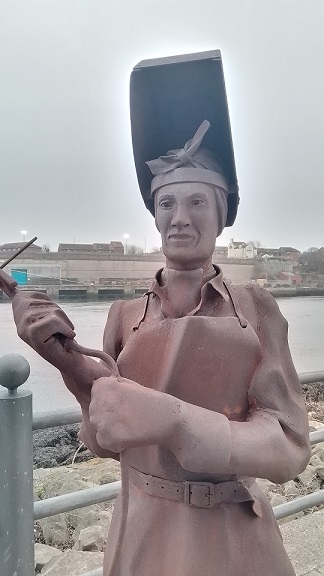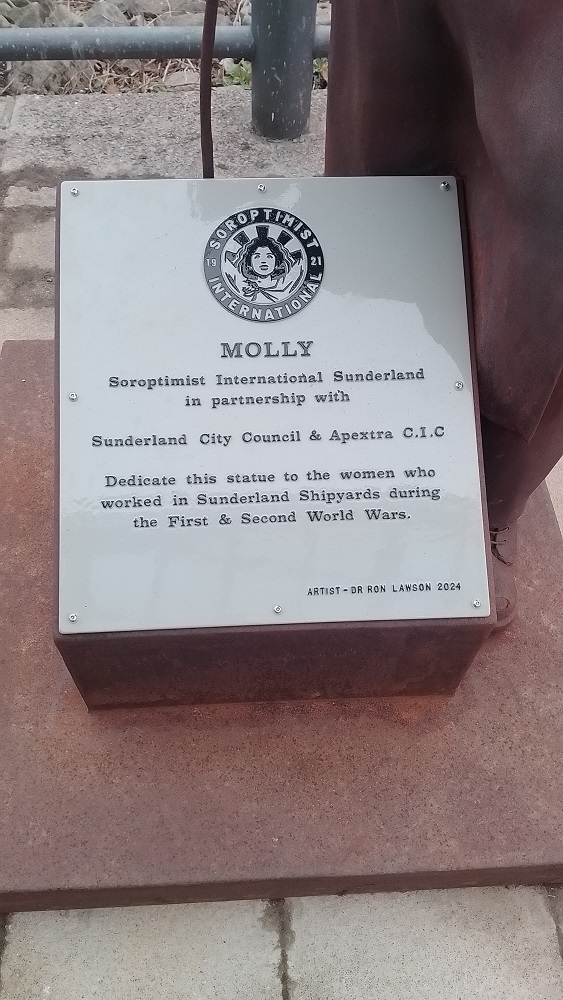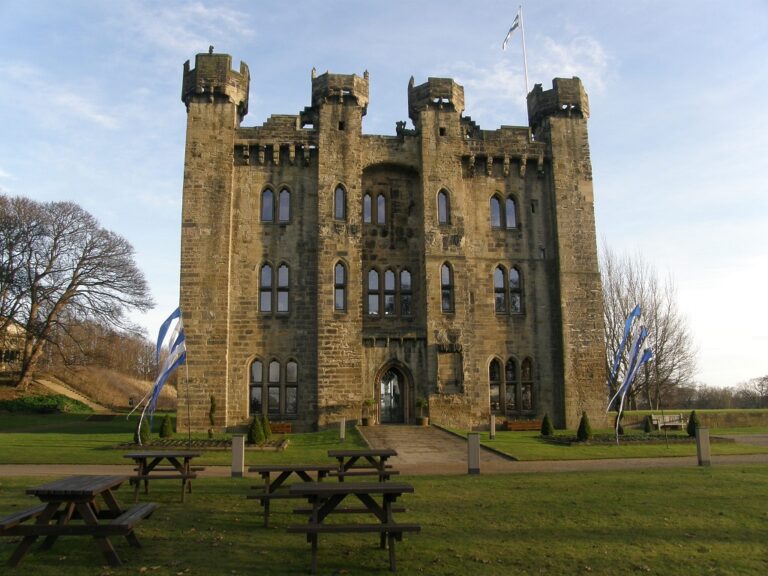This past week, Sunderland welcomed a stunning addition to its artistic and cultural landscape with the unveiling of the Molly statue at the National Glass Centre. This highly anticipated event drew crowds eager to witness a new symbol of the city’s rich heritage and vibrant spirit.

The Inspiration Behind Molly
Molly is more than just a statue; she represents resilience, creativity, and a deep connection to Sunderland’s maritime and industrial legacy. The sculpture was inspired by local legends and the untold stories of the women who worked in the region’s glassworks and shipyards during their heyday. For centuries, these women played a vital role in shaping the city’s identity, yet their contributions have often been overlooked.
Molly’s design is rooted in this history. She stands tall with an expression of quiet determination, her gaze directed towards the River Wear—a nod to Sunderland’s enduring relationship with its waterways. Her intricate features incorporate elements of glasswork and steel, symbolising the industries that built the city and the communities that thrived within them.
The Creation Process
The journey to bring Molly to life was as intricate and remarkable as the statue itself. Designed by Dr Ron Lawson, Molly was a collaborative effort involving local artists, historians, and community groups. Dr Lawson, known for his ability to intertwine emotion and history in his work, spent months researching Sunderland’s industrial past to ensure Molly embodied authenticity and depth.
Constructed primarily from recycled glass and steel, the statue is a testament to sustainable art. Local glassmakers contributed their expertise, using traditional techniques to create the shimmering panels that form Molly’s dress. The interplay of light and texture on the sculpture’s surface mirrors the way sunlight dances on the River Wear, creating a dynamic visual experience that changes throughout the day.
The Unveiling Ceremony
The unveiling of Molly was a spectacle to behold. Held on a crisp winter morning, the event attracted a mix of Sunderland residents, art enthusiasts, and civic leaders. Against the backdrop of the iconic Glass Centre, the ceremony began with speeches highlighting the city’s artistic renaissance.
Councillor Elaine Roberts, a passionate advocate for local culture, delivered a heartfelt address. “Molly is more than a work of art; she is a beacon of hope and pride for Sunderland. She reminds us of where we’ve come from and inspires us to look forward with confidence.”
Local schoolchildren added a touch of magic to the occasion, performing a song specially composed for the event. The unveiling itself was met with gasps and applause as the statue was revealed, its glass elements catching the sunlight in a dazzling display.
A New Icon for Sunderland
Molly has quickly become a talking point across the city, sparking conversations about Sunderland’s heritage and future. Visitors to the Glass Centre have been captivated by the statue’s intricate design and its powerful symbolism. For many, Molly is not just an artwork but a reflection of Sunderland’s soul—a celebration of its people, their strength, and their creativity.
The statue has also sparked renewed interest in Sunderland’s artistic offerings. The Glass Centre, already a hub for creativity and innovation, has seen a surge in visitors eager to see Molly and explore its other attractions. From glassblowing demonstrations to contemporary art exhibitions, the centre is cementing its place as a cultural cornerstone of the North East.

Community Reactions
The response to Molly has been overwhelmingly positive. Social media has been abuzz with photos and reflections, with hashtags like #MollySunderland and #GlassCentre trending locally. Residents have shared personal stories about their connections to the industries Molly represents, turning the statue into a catalyst for collective memory.
Local artist Jake Henderson, who contributed to the project, shared his thoughts. “Molly isn’t just a statue; she’s a conversation starter. She’s making people think about our history and how we can carry those lessons into the future.”
Even visitors from outside the region have been drawn to Sunderland to see Molly, boosting local tourism. The statue’s presence has become a source of pride, with many residents likening her to other iconic sculptures in the UK, such as the Angel of the North.
The Broader Impact
The unveiling of Molly highlights a growing trend in Sunderland: a renewed focus on culture and the arts as drivers of regeneration. Over the past decade, the city has invested heavily in creative projects, from the revitalisation of historic sites to the promotion of contemporary art and design.
Molly’s creation and installation underscore the power of community collaboration in bringing these initiatives to life. By involving local voices in the process, the project has fostered a sense of ownership and pride. It’s a model that other cities could learn from as they seek to celebrate their own identities.
Looking Ahead
As Molly settles into her new home, there are plans to build on the momentum she has generated. The Glass Centre is organising workshops and events inspired by the statue, from storytelling sessions to art classes. Schools across Sunderland are incorporating Molly into their history and art curricula, ensuring that her story continues to inspire future generations.
For Sunderland, Molly is more than a sculpture; she’s a symbol of transformation. She stands as a reminder of the city’s past, a celebration of its present, and a beacon of hope for its future. Whether you’re a lifelong resident or a first-time visitor, Molly is sure to leave an impression—a gleaming testament to the spirit of Sunderland.


![{"capture_mode":"AutoModule","faces":[]}](https://discoversunderland.com/wp-content/uploads/2025/01/marina.jpg)
![{"capture_mode":"AutoModule","faces":[]}](https://discoversunderland.com/wp-content/uploads/2025/04/boating_lake_Roker_Park-768x704.jpg)
